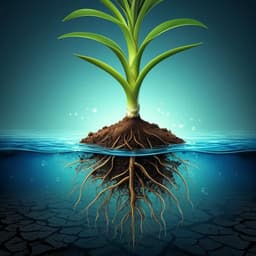
Space Sciences
Plants grown in Apollo lunar regolith present stress-associated transcriptomes that inform prospects for lunar exploration
A. Paul, S. M. Elardo, et al.
This groundbreaking research by Anna-Lisa Paul, Stephen M. Elardo, and Robert Ferl investigates the challenges of growing *Arabidopsis thaliana* in lunar regolith. The findings reveal the plant's struggle and stress responses in extraterrestrial soil, highlighting both potential and limitations for future lunar agriculture.
Playback language: English
Related Publications
Explore these studies to deepen your understanding of the subject.







